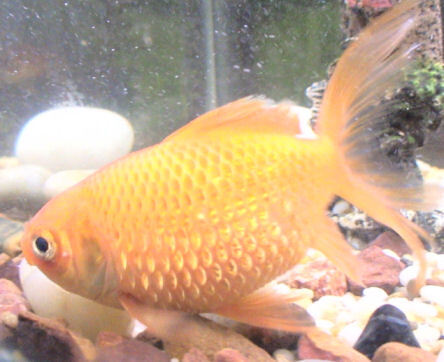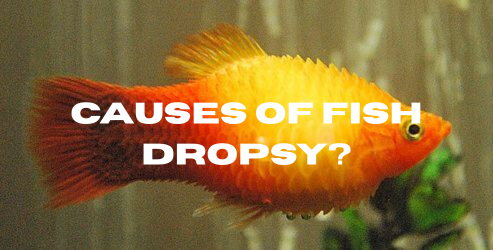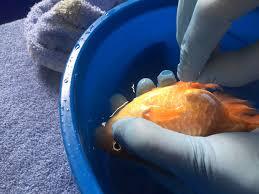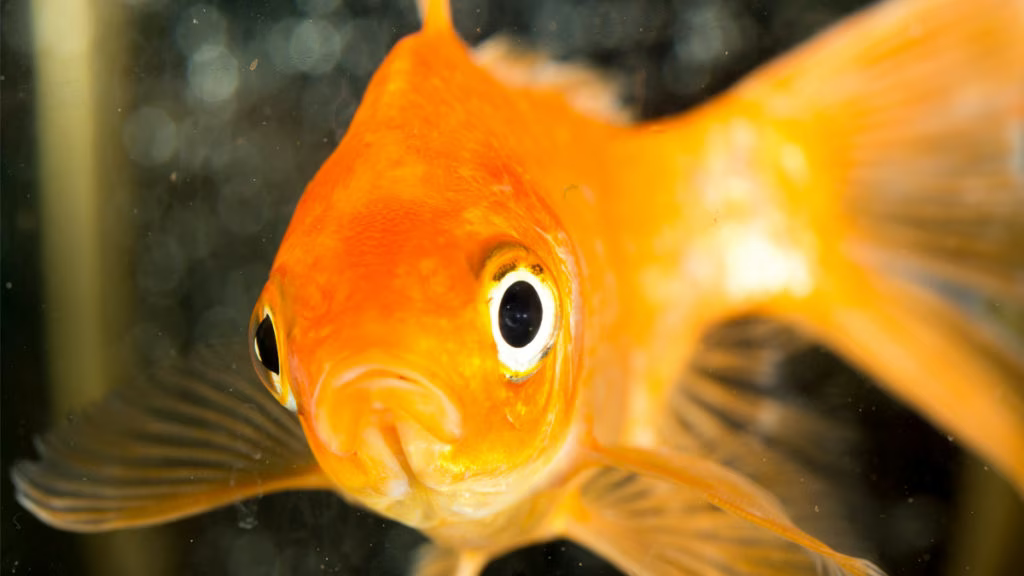Posted by Aquatic Veterinary Specialist on 17th Apr 2025
Dropsy in Fish: Signs, Causes & Effective Treatment Guide
Dropsy in Fish: Signs and Treatment

Introduction: Dropsy in fish is a serious and often alarming condition that every aquarium hobbyist should be aware of. Many people ask what is dropsy in fish and how to recognize it. In simple terms, fish dropsy refers to a combination of symptoms caused by internal fluid buildup, making the fish appear bloated. This article will explain what causes dropsy in fish, the telltale dropsy in fish symptoms to watch for, and how to treat dropsy in fish (from mild cases to severe). We’ll also cover effective treatment options – including how to cure dropsy in fish with the help of aquarium antibiotics – and essential prevention tips to keep your fish healthy.
What Is Dropsy in Fish?
Dropsy (sometimes called fish bloat) is not a specific disease but rather a condition resulting from internal swelling. It occurs when fluid accumulates inside a fish’s body cavity or tissues, causing severe bloating. Essentially, the fish’s organs (especially the kidneys and liver) cannot eliminate excess water, leading to edema. What is dropsy in fish? It’s best described as a symptom of an underlying issue, often an infection or organ failure, rather than a standalone illness.
This means that if your fish has dropsy, something else (like a bacterial infection, parasitic infection, or organ dysfunction) is causing it. For example, bacterial infections (commonly Aeromonas, a gram-negative bacterium) are a frequent culprit, especially in weakened fish. As fluid builds up, the fish’s abdomen swells and other organs are pushed aside, which can even cause the spine to curve or the fish’s scales to stick out in advanced cases. Unfortunately, by the time dropsy in fish becomes visible, the fish is often very ill and the condition can be fatal if not addressed quickly. That’s why early detection and treatment are critical.
Dropsy in Fish Symptoms

Recognizing dropsy in fish symptoms early can make a big difference in treatment success. The most obvious sign is a bloated or swollen belly. In addition, affected fish often exhibit a “pinecone” appearance – their scales stick out from the body instead of lying flat, especially around the belly. This happens due to the swelling, and it’s a classic indicator of severe dropsy. Here are some common dropsy signs and symptoms to look for:
-
Swollen abdomen (bloating): The fish’s belly looks very fat or distended, more than a normal well-fed fish.
-
Raised scales: Scales protrude outward, giving the fish a pinecone-like texture when viewed from above. (This usually occurs in advanced stages of dropsy.)
-
Bulging eyes (Popeye): The eyes may start to swell or bulge out due to internal pressure.
-
Clamped fins: The fish may hold its fins tight against the body, indicating stress and illness.
-
Loss of color in gills: Gills can appear pale (anemic) or the fish’s overall coloration may dull. Pale gills are a sign the fish’s blood isn’t carrying oxygen well, often due to organ failure.
-
Skin ulcers or red patches: In some cases, infections cause sores on the body.
-
Abnormal feces: Feces might be pale or stringy, indicating internal issues.
-
Lethargy and loss of appetite: A fish with dropsy often stops eating, may float listlessly or hide, and shows little energy. It might separate itself from other fish.
-
Curved spine: In extreme cases, the swelling can deform the fish’s spine, causing a noticeable curvature.
Tip: Not all symptoms may appear at once. Early on, you might only notice a slight swelling or a fish acting lethargic and not eating. As the condition progresses, more of the above signs will manifest. If you see a combination of these symptoms (especially the swollen belly and raised scales together), you’re likely dealing with dropsy.
What Causes Dropsy in Fish?

After identifying dropsy symptoms, the next question is usually what causes dropsy in fish. Dropsy itself is a result of organ failure (often kidney failure) or severe internal infection that leads to fluid retention. The immediate cause in many cases is a bacterial infection in the fish’s internal organs. Aeromonas, a gram-negative bacterium commonly present in aquariums, is often associated with dropsy outbreaks. These bacteria can take hold when a fish’s immune system is weakened.
So, why do fish get these infections? The underlying cause is usually stress or poor environmental conditions that compromise the fish’s immunity. Think of dropsy as a sign that something went very wrong with the fish’s environment or health. Here are common causes and risk factors for dropsy in aquarium fish:
-
Poor water quality: The number one cause of stress in fish. Elevated ammonia or nitrite, high nitrate, or just dirty water can damage fish health. Chronic poor water conditions make fish susceptible to infections that cause dropsy.
-
Ammonia or nitrite spikes: Sudden spikes from an uncycled tank or a filter failure can poison fish and harm their kidneys. This often leads to organ damage or vulnerability to bacteria.
-
Sudden temperature changes or improper temperature: A large drop (or rise) in water temperature can stress fish significantly. Tropical fish kept in water that is too cold, for example, may become immuno-compromised.
-
Overcrowding and stress from tankmates: Too many fish in a tank leads to waste buildup and competition. Aggressive tankmates that bully others can also cause chronic stress. Stress suppresses immune function, inviting disease.
-
Improper nutrition: A poor diet or vitamin deficiencies can weaken a fish’s immune system. Old or low-quality food can also introduce or encourage harmful bacteria.
-
Other diseases or parasites: A fish already battling parasites (like internal worms) or other infections is more likely to develop dropsy as a secondary complication. Parasites can damage internal organs or open the door for bacterial invasion.
-
Prolonged stress: Any long-term stressor – whether it’s vibration, constant netting, or even incorrect pH – can gradually reduce a fish’s ability to fight off infection. Over time, this can lead to systemic infections that manifest as dropsy.
In summary, dropsy in fish usually arises from a perfect storm of stress factors and opportunistic infection. The bacteria that cause dropsy may exist in the tank all the time, but a healthy fish’s immune system keeps them in check. It’s when the fish is stressed or weakened that the bacteria multiply and cause the internal damage that leads to dropsy. This is why you often see an outbreak after a major tank problem (like a filter crash or a big temperature swing).
Dropsy in Fish Treatment (How to Treat & Cure It)

When facing this condition, many aquarium owners wonder how to cure dropsy in fish. Treating dropsy can be challenging, but if caught early, there’s a chance to save your fish. Dropsy in fish treatment focuses on removing the underlying cause (for example, improving water quality or treating infection) and providing supportive care to help the fish recover. It’s important to act fast because advanced dropsy is often lethal. Here we’ll outline the steps for how to treat dropsy in fish effectively, from mild cases to severe:
-
Quarantine the sick fish in a hospital tank: Immediately isolate the affected fish from healthy tankmates. Dropsy itself isn’t directly contagious, but the underlying infection might be, and at the very least you want to reduce stress from other fish. Use a clean, conditioned hospital tank with gentle filtration. This makes it easier to treat and monitor the sick fish, and prevents contaminating the main tank with medication. (Meanwhile, keep an eye on your other fish – if dropsy was caused by a contagious pathogen, others might show symptoms too.)
-
Improve water quality and reduce stress: Ensure the hospital tank has pristine water. Check ammonia, nitrite, and nitrate levels – perform a partial water change if needed to give the fish the best water possible. Add an aquarium salt or Epsom salt bath to the hospital tank: a common dose is about 1 teaspoon of salt per gallon of water. Salt in the water helps the fish regulate fluids via osmosis, relieving pressure on swollen tissues and the kidneys. Epsom salt (magnesium sulfate) is particularly useful for reducing internal swelling and can act as a mild diuretic, helping draw out excess fluid. Make sure to dissolve the salt completely in a cup of tank water before adding it in. Maintain a steady, appropriate water temperature (sudden changes can worsen the stress). Dim the lights if the fish is hiding, to keep it calm.
-
Use the right medication (antibiotics): Because most dropsy cases are due to bacterial infection, treating the fish with a broad-spectrum antibiotic is often necessary. In the hospital tank, dose an antibacterial fish medication according to product instructions. Antibiotics can help destroy or weaken the bacteria causing the infection, giving the fish’s immune system a chance to recover. Commonly recommended antibiotics for dropsy include ones effective against gram-negative bacteria (since Aeromonas and similar bacteria are usually to blame). Do not use antibiotics in your main display tank – it can kill beneficial bacteria in your filter, causing a cycle crash. By treating in a separate hospital tank, you protect your main aquarium’s biofilter. Follow the full course of treatment as directed (usually several days to a week, depending on the medication).
-
Provide supportive care (nutrition and cleanliness): While the fish is in quarantine being treated, keep the environment very clean. Perform small, frequent water changes in the hospital tank (being careful to re-dose any medication removed, according to instructions). This keeps waste and bacteria levels down. Offer high-quality food to the fish, such as fresh or frozen foods (e.g. brine shrimp, daphnia) or a medicated food if prescribed. Often, a fish with dropsy won’t eat much, but try enticing it with its favorite treat once it shows interest. Good nutrition will help strengthen its immune response. Remove any uneaten food promptly to maintain water quality. You can also slightly raise the water temperature (within the fish’s safe range) as warmer water can boost the fish’s metabolism and immune function – but ensure oxygen levels remain high since warm water holds less oxygen.
-
Monitor and wait: There is no instant cure for dropsy, so recovery, if it happens, will take time. Continue to observe the fish closely each day. Look for reduction in swelling, improved behavior (such as resumed eating or activity), and normalization of scales (scales lying flat again). If the fish’s condition improves, continue treatment for the full recommended period and even a bit beyond until all symptoms have resolved. After finishing antibiotics, keep the fish in quarantine for a couple of weeks to be sure it’s truly cured before returning it to the main tank. Unfortunately, if the fish does not improve after a course of treatment or if its condition worsens (e.g., belly keeps swelling, fish becomes pineconed and very lethargic), the prognosis is poor. In advanced cases where the fish is suffering, humane euthanasia may be considered to prevent further suffering. Always make this decision carefully, and explore treatment options first if the fish still has a chance to pull through.
Mild vs. Severe Cases: In mild cases (where only slight bloating is present and the fish is still eating), sometimes improving water quality and adding salt may be enough to turn the fish around. The fish’s own immune system might fight off the issue if supported by clean water and good food. However, in severe dropsy cases (e.g., significant bloating with pineconed scales and organ damage), even with aggressive treatment, the survival rate is low. That said, there are instances where fish do recover if treated early and appropriately, so it’s worth trying rather than giving up. The key is to act promptly at the first sign of dropsy.
Now that we’ve covered the general treatment steps, let’s look at the specific role of antibiotics in treating dropsy. Since bacterial infection is a common root cause, the right antibiotic can save your fish. In the next section, we’ll highlight some fish antibiotics that are used to treat dropsy and other infections.
Fish Antibiotics for Dropsy Treatment
When dealing with a dropsy outbreak caused by bacteria, using the correct fish antibiotics can greatly improve the chances of curing the fish. There are several effective medications available (without a vet prescription) to hobbyists. TheFishAntibiotics.com carries a wide range of these treatments to help you fight infections like dropsy in your aquarium fish. Below is a list of popular fish antibiotics that can support dropsy treatment – each links to more information and the product page:
-
Fish Amoxicillin: A broad-spectrum antibiotic (penicillin-class) commonly used for bacterial fish illnesses. It’s effective against many gram-positive and some gram-negative bacteria.
-
Fish Cephalexin: A cephalosporin antibiotic that targets a variety of bacterial infections in fish. Useful for gram-positive bacteria and certain gram-negatives.
-
Fish Penicillin: A classic antibiotic effective mostly against gram-positive bacteria. It can help in cases where the pathogen is known to respond to penicillin-based drugs.
-
Fish Ciprofloxacin: A fluoroquinolone antibiotic that is powerful against many gram-negative bacteria. Ciprofloxacin can be a good choice for stubborn or severe infections underlying dropsy.
-
Fish Metronidazole: An antiparasitic and antibacterial medication. Metronidazole is especially useful if internal parasites or anaerobic bacteria are suspected to be contributing to the dropsy.
-
Fish Clindamycin: An antibiotic that fights gram-positive bacteria and some anaerobes. It’s often used for fish with infections in the skin, muscle, or mouth, but can support dropsy treatment if those bacteria are involved.
-
Fish Azithromycin: A broad-spectrum macrolide antibiotic. Azithromycin can treat a range of bacterial infections and is sometimes used when fish don’t respond to other antibiotics.
-
Fish Doxycycline: A tetracycline-class antibiotic that is effective against many gram-negative bacteria (like Aeromonas). Doxycycline is a great option for treating dropsy since it targets the typical bacteria involved.
-
Fish Sulfamethoxazole: (Usually combined with trimethoprim as fish SMZ-TMP) – a combination that works against a broad array of bacteria. This combo antibiotic can be very potent for internal infections in fish.
-
Fish Fluconazole: An antifungal medication. While dropsy is most often bacterial, sometimes fungal infections or complications can occur. Fluconazole helps treat systemic fungal issues in fish.
Each of these antibiotics has specific uses and spectrum of activity. It’s important to identify the likely cause of dropsy (for instance, a bacterial infection) to choose the most appropriate medication. Often, if you’re unsure, a broad-spectrum antibiotic (like doxycycline or a combination like sulfamethoxazole/trimethoprim) is a good first approach for dropsy. Always follow the dosage instructions on the package. If one antibiotic doesn’t show results, you might need to try another, but never mix antibiotics simultaneously unless directed, as this can be stressful or dangerous to the fish.
Remember to treat in a hospital tank when using these meds, and complete the full course even if the fish looks better, to ensure the infection is fully cleared. For more details or to purchase any of the above medications, you can visit our store at TheFishAntibiotics.com – we provide these fish antibiotics with no prescription required, making it convenient to get what you need to help your fish recover.
Prevention: How to Prevent Dropsy in Fish

As the saying goes, an ounce of prevention is worth a pound of cure. This is especially true with dropsy. Once a fish is bloated and pineconing, it’s very hard to save it, so your best strategy is to prevent dropsy from occurring in the first place. Luckily, the conditions that lead to dropsy (poor water and stress) are within your control as a fish keeper. Here are some prevention tips to reduce the risk of dropsy in aquarium fish:
-
Maintain excellent water quality: This is the #1 prevention method. Keep up with regular water changes (e.g. 20-30% weekly). Use a good filter and clean or replace filter media as needed to avoid ammonia/nitrite buildup. Test your water periodically for ammonia, nitrite, and nitrate. Ideally, ammonia and nitrite should always be 0, and nitrates kept low (under ~20 ppm for most fish). Good water quality keeps fish’s immune systems strong.
-
Avoid overcrowding: Give your fish adequate space. Follow recommended tank sizes and stocking levels for each species. Overcrowding leads to rapid waste accumulation and can cause aggression or stress among fish. A less crowded tank is easier to keep clean and healthy.
-
Do not overfeed: Overfeeding is a common mistake that can foul the water and harm fish health. Feed small portions that your fish can consume in a couple of minutes, and remove any leftovers. A fish that eats too much and lives in dirty water is a prime candidate for dropsy. Also, use high-quality fish food and replace dried foods (like flakes or pellets) every 1-2 months so they remain fresh and vitamin-rich. Stale food can lose nutrients or grow bacteria.
-
Quarantine new fish and plants: Always quarantine new additions for a couple of weeks in a separate tank before introducing them to your main aquarium. This isolation period helps ensure newcomers aren’t carrying infections or parasites that could spread and trigger dropsy or other diseases in your main tank. Likewise, avoid transferring water from a pet store tank into your own.
-
Reduce stress factors: Keep the aquarium environment stable and calm. Match the tank parameters (temperature, pH, hardness) to your fishes’ needs and avoid sudden fluctuations. Provide hiding spots or decor so fish feel secure. Minimize aggressive tankmate interactions – if a fish is being bullied, it may need to be separated. A stress-free fish is a healthy fish.
-
Keep up with tank maintenance: In addition to water changes, vacuum the substrate periodically to remove waste, and trim any decaying plant matter. Clean algae as needed to keep the environment clean. Proper filtration and aeration also ensure the water remains oxygenated and safe for your fish.
-
Observe your fish daily: Simply taking a minute each day to watch your fish can help you catch early signs of illness. If you notice a fish isolating itself, not eating, or looking slightly bloated or ragged, take action before it progresses. Early intervention (such as a water change or medicated food) can prevent a full-blown dropsy case.
By following these preventive measures, you create a healthy environment where dropsy is unlikely to occur. In well-maintained aquariums with low stress, fish have robust immune systems that can fight off the bacteria or parasites that might otherwise cause problems. Remember, prevention is the best cure when it comes to dropsy.
Conclusion
Dropsy in fish is a frightening condition, but understanding its signs and causes can help you respond quickly and effectively. To recap, dropsy in fish is identified by a swollen body and raised scales, among other symptoms. It’s caused by underlying issues like bacterial infections often brought on by poor conditions or stress. Treatment involves immediate quarantine, improved water quality, salt baths, and appropriate antibiotics to cure the internal infection. While not every case is curable – especially advanced ones – many fish can survive dropsy if it’s caught early and treated aggressively.
As a fish keeper, your goal should be to provide the best care to prevent dropsy from happening at all. Keep the tank clean and stable, feed a quality diet, and watch your fish for any early illness signs. If dropsy does strike, now you know how to treat dropsy in fish with proper steps and medications. For any needed treatments, from water conditioners to fish antibiotics for dropsy, visit our store TheFishAntibiotics.com for expert-backed products and guidance. With diligence and care, you can keep your fish healthy and avoid the dangers of dropsy in your aquarium. Happy fish keeping!

